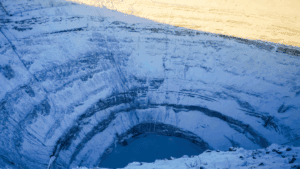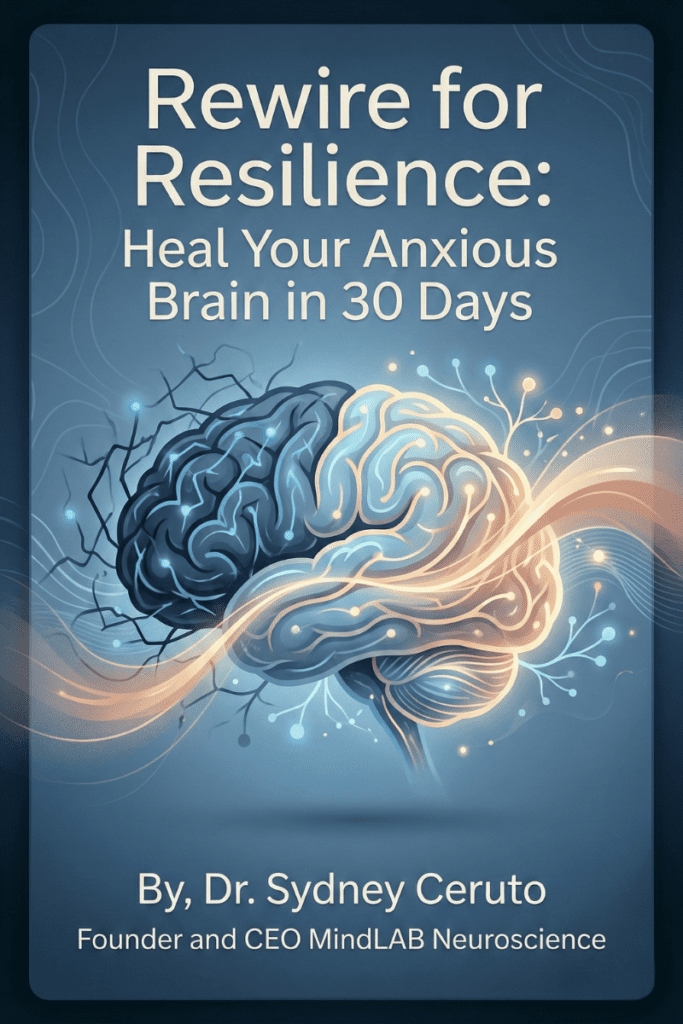Dopamine Depletion: Unmasking the Brain’s Hidden Crisis
Dopamine depletion is rapidly emerging as a silent epidemic in modern brain health circles, capturing the attention of neuroscientists, clinicians, and digital wellness advocates worldwide. The profound implications of dopamine depletion extend far beyond the classic symptoms of low motivation or reduced pleasure; new research reveals its role in everything from cognitive flexibility to immune function, impulse control, and emotional regulation. Dopamine, a critical neuromodulator, orchestrates the complex reward pathways that shape daily decisions and even the most fundamental experiences of joy and satisfaction. When dopamine levels move out of balance, either due to chronic stress, overstimulation, medical conditions, or persistent digital overload, the entire brain and body can succumb to states of physical and psychological blunting.
The roots of dopamine depletion often lie beneath the surface of lifestyle habits. Digital overstimulation—hour after hour of scrolling, instant messaging, gaming, and online like-seeking—chronically hijacks brain reward pathways, triggering what neuroscientists call “anti-reward states.” Prolonged periods of stress, poor nutrition, erratic sleep schedules, and the absence of meaningful downtime further compound the problem. For many, dopamine depletion remains invisible, masked by fatigue, irritability, indecision, and a subtle loss of purpose. Yet, its effects ripple into every domain, including work performance, creativity, social connection, and physical health.
In evolutionary terms, the brain evolved to conserve dopamine for rewarding, adaptive behaviors—pursuing goals, forging social bonds, seeking nourishment, and securing survival advantages. In today’s environment, however, these natural drives are often co-opted by artificial sources of stimulation. The paradox: the more we chase fleeting pleasures, the more we sabotage our ability to experience lasting joy, innovation, and drive, falling into the trap of dopamine depletion and its associated behavioral dead ends.
Psychologically, depletion of dopamine sets the stage for anhedonia—a marked inability to feel pleasure—and can fuel demotivation, procrastination, and emotional flatness. Individuals may struggle to maintain interest in previously enjoyed activities, feel disconnected from social experiences, or experience fluctuations in mood with little discernible cause. The subtlety of these changes can delay recognition and intervention, making early awareness and precise neuroscience-based assessment essential.
Sociologically, shared experiences of dopamine deficiency in digitally saturated cultures have prompted a new wave of scientific and public inquiry. Workplaces, schools, and families are now grappling with the consequences of screen dependence, overstimulation, and reward dysfunction, recognizing dopamine depletion as a barrier to sustained motivation, collaboration, and well-being. Scientists point out that societal normalization of “dopamine hits” from social media and gaming prevents many from detecting an underlying deficit until more severe consequences emerge.
For those invested in personal development and professional coaching, understanding the concept of dopamine depletion is crucial. It’s not only a discussion about neurotransmitters, but a call to reshape habits, routines, and environments in service of deep, non-invasive brain health. The sections that follow will reveal how dopamine depletion rewires neural circuits, the most telling symptoms to watch for, and science-based strategies for sustainable recovery—and why now is the time to elevate the conversation for clients, communities, and leadership.
Neurobiological Foundations: How Dopamine Drives Reward and Motivation
At the heart of dopamine depletion lies the elegant, intricate dance between neurobiology and daily experience. Dopamine is not just a “pleasure molecule”—it is the conductor of the brain’s motivation, attention, learning, and reward circuits. In optimal amounts, dopamine sharpens focus, encourages meaningful goal pursuit, and sparks the creativity and risk-taking that fuel growth and innovation. When dopamine levels drop, personal and professional life can grind to a halt; even simple tasks lose their appeal, and the sensation of satisfaction is replaced by apathy, indecisiveness, and a muted emotional palette.
Neuroscientific research demonstrates that dopamine-producing neurons—especially those within the ventral tegmental area and the substantia nigra—send projections throughout the brain. These pathways create a rich meshwork of connections, particularly with the prefrontal cortex (responsible for executive function and planning) and the striatum (driving movement and reward anticipation). Dopamine release is tightly regulated, responding to cues of novelty, achievement, and social interaction, as well as feedback from hormones, genes, and environmental stressors.
When there is dopamine depletion—whether by chronic overstimulation, ongoing inflammation, genetic predisposition, or the oxidative stress of aging—the reward system becomes blunted. Individuals lose the ability to enjoy activities that once brought energy and pleasure, and they may struggle to muster motivation for routine tasks or even basic self-care. These changes are not just mental; dopamine depletion is visible on brain scans, where key regions show reduced activity, network connectivity, and response to positive stimuli.
The evolutionary story behind dopamine’s role is equally fascinating. In early humans and animals, dopamine supported survival by reinforcing behaviors critical to thriving—such as foraging, forming alliances, and learning new skills. The dopaminergic system evolved to be flexible and adaptable, with fine-tuned sensitivity to changes in the environment and internal state. As societies have advanced, these natural reward pathways have become vulnerable to hijacking: artificial stimulation from screens, hyper-palatable foods, or addictive substances overwhelm the system and hasten dopamine depletion.
Understanding these neurobiological mechanisms sheds light on why dopamine depletion is so insidious. It impacts risk-reward evaluation, memory, motivation, and even immunity. Symptoms can include physical fatigue and pain, changes in balance and coordination, and a general malaise that may resemble—and overlap with—clinical depression, Parkinson’s, or chronic stress syndromes.
For neuroscience-based coaches and practitioners, grasping the complexity of dopamine depletion is the cornerstone of non-invasive, high-level intervention. The goal is restoration—reviving healthy neurochemistry through targeted strategies, environmental redesign, and routines that harness the brain’s unrivaled capacity for adaptation, plasticity, and healing.
Evolutionary Perspectives on Dopamine Depletion
Dopamine depletion, while detrimental in today’s landscape, can be better understood through a sophisticated evolutionary lens. The dopaminergic system, one of the oldest in the brain, evolved to reinforce fundamental behaviors, including seeking food, pursuing novelty, forming social bonds, and avoiding danger. In primitive organisms and across animal species, dopamine supported survival through reward reinforcement and motor control, enabling rapid adaptation and exploration in changing environments.
Human evolution introduced complex social structures, expanding the role of dopamine beyond immediate reward to encompass learning, memory, attention, and hierarchical social navigation. Genetic variations in dopamine receptors and signals influenced traits such as impulsivity and adaptability, which, in hunter-gatherer contexts, often conferred survival advantages. Short attention spans enabled quick threat detection, and impulsive actions could be life-saving in the right circumstances. Conversely, these same traits, when exposed to constant artificial stimuli or social stressors, can accelerate dopamine depletion and psychiatric vulnerability in the modern world.
Environmental adaptations—such as those triggered by chronic stress or sedentary lifestyles—drive the brain’s dopamine system toward depletion. The physical expansion of dopamine neuron networks needed to support complex human cognition and social functions has rendered modern brains particularly susceptible to energy deficits and oxidative stress, which compromise dopamine production and sustainability.
Parkinson’s disease offers a striking evolutionary case study. The massive expansion of human dopamine networks, compared to those of other mammals, meant a remarkable capacity for learning and movement, but also increased vulnerability to depletion and neurodegeneration. Ancient dopamine adaptations that once ensured survival now face new challenges in the realms of longevity, technological change, and reduced physical activity.
The evolutionary perspective reframes dopamine depletion not as a failing, but as an adaptation gone awry in rapidly shifting contexts—an interplay between inherited traits and environmental pressures. Coaching and neuroscience-based interventions today must honor this dynamic, helping individuals adapt and thrive while acknowledging that the roots of dopamine depletion run deep through the story of human progress.
Ultimately, dopamine depletion illuminates the tension between ancient wiring and modern demands. By understanding the evolutionary underpinnings, individuals and professionals gain powerful context for science-driven solutions, resilience, and restoration of healthy reward dynamics. This broadened awareness turns the challenge of dopamine depletion into an opportunity for meaningful change and renewed agency in a high-stimulus, high-pressure world.
The Psychology of Anhedonia and Dopamine Deficit States

Dopamine depletion is not merely a biological anomaly—it profoundly alters a person’s psychological landscape, often producing anhedonia, a clinical inability to derive pleasure from previously rewarding activities. Unlike fleeting sadness or momentary frustration, anhedonia presents as a loss of interest and enjoyment in activities that once fueled energy, connection, and purpose. The deep psychological toll of dopamine depletion may quietly manifest as emotional numbness, lack of initiative, difficulty setting goals, and persistent procrastination, with individuals reporting that even social relationships and creative pursuits lose their allure.
Motivation, defined as the drive to initiate and persist in goal-directed behavior, is underpinned by dopamine signaling between the ventral tegmental area and the prefrontal cortex. When these pathways are disrupted, basic acts of self-care and ambition can feel overwhelming. Everyday accomplishments, once celebrated, are accompanied instead by a muted emotional response, and tasks requiring high concentration or learning can trigger fatigue and avoidance. This emotional state is often misattributed to laziness or character weakness, when in reality it reflects blunted reward signaling and a reduced capacity for neurochemical engagement and enjoyment.
Sleep disturbances further complicate psychological recovery. Dopamine depletion can disturb sleep cycles, impairing restorative rest and cognitive function. People may wake repeatedly or struggle to fall asleep, reinforcing cycles of irritability, memory lapses, and low cognitive stamina. Other mental symptoms—poor attention, trouble processing information, and increased susceptibility to stress—are common as dopamine’s influence on attention and working memory wanes.
In more severe cases, dopamine depletion may present with symptoms resembling major depression or apathy syndrome. These individuals may withdraw socially, lose the ability to feel joy in even intimate relationships, and fall into states of existential emptiness. Long-term depletion also impairs neuroplasticity and resilience, eroding the mind’s ability to adapt to challenge, recover from setbacks, and pursue personal and professional goals.
For coaches and clinicians, the psychological patterns of dopamine depletion require sensitive detection and creative, science-driven intervention. Addressing emotional blunting, social withdrawal, chronic demotivation, and cognitive fog demands strategies tailored to reignite reward circuits, restore neurochemical balance, and cultivate meaningful life routines. By recognizing the subtle and overt effects of dopamine depletion on psychological health, it becomes possible to design more effective, non-invasive wellness approaches that move clients beyond the limits of mere symptom management and toward the authentic restoration of motivation, pleasure, and overall mental well-being.
Sociological and Lifestyle Triggers: Digital Overload, Stress, and Nutrition
Dopamine depletion is attributed mainly to the unique stresses and stimuli of contemporary life. Unlike the slow, rhythmic rewards of ancestral environments, the modern world bombards individuals with artificial stimulation, chronic stress, and inconsistent nutrition—conditions far removed from the “natural” cycles that once governed dopamine release and recovery.
Digital overload is among the leading sociological contributors to this issue. Smartphones, social platforms, streaming entertainment, and gamified apps deliver microbursts of dopamine through unpredictable feedback—likes, comments, viral content, rapid scrolling. This relentless reward hijacking diminishes baseline dopamine, training the brain to expect constant novelty while leaving it unable to sustain pleasure from deeper, slower rewards. People begin to crave “hits” of stimulation, yet experience less satisfaction with each cycle, losing touch with sustained attention and more fulfilling engagement.
Chronic stress compounds the issue. Whether from work, finances, family dynamics, or environmental pressures, unrelenting stressors keep the hypothalamic-pituitary-adrenal axis in a state of overdrive, flooding the body with cortisol and sapping dopamine stores. Brain imaging studies reveal how chronic stress disrupts dopamine transmission in key reward and cognitive control circuits, impairing resilience, creativity, and emotional regulation.
Nutrition also plays a crucial yet often overlooked role. Diets low in amino acids, antioxidants, and micronutrients can reduce the body’s ability to synthesize and protect dopamine. Highly processed foods, excessive sugar, and erratic eating patterns undermine dopamine health, while neurotoxic substances such as alcohol and recreational drugs can prematurely deplete reserves and blunt receptor function.
Social disconnection and isolation—whether due to remote work, geographic mobility, or cultural fragmentation—are other critical factors. Genuine social bonds naturally stimulate the release of dopamine and oxytocin, reinforcing feelings of reward, trust, and overall well-being. In their absence, digital connections often provide shallow, transient stimulation that fails to replenish core neurochemical needs.
Even well-meaning attempts to self-medicate—energy drinks, caffeine, compulsive exercise, or shopping—can perpetuate dopamine depletion by overstimulating reward pathways or masking underlying deficiency. Ultimately, addressing sociological and lifestyle triggers requires awareness, intention, and science-driven adjustments: a recognition that dopamine depletion will persist unless daily routines, environments, and social practices are actively realigned to support brain and emotional health.
Dopamine Depletion Syndromes: Parkinson’s, Depression, and More

The impact of dopamine depletion extends far beyond mild motivational issues—it is a root cause in various severe neurological and psychiatric syndromes. Parkinson’s disease is perhaps the most well-known condition associated with profound dopamine depletion. In Parkinson’s disease, the loss of dopamine-producing neurons in the substantia nigra disrupts motor control, resulting in tremors, rigidity, bradykinesia, and postural instability. Yet patients also experience non-motor symptoms: anhedonia, apathy, anxiety, and sleep disturbances—all tied to the depleted dopaminergic tone within broader brain networks.
Major depressive disorder can also be driven by decreased dopamine synthesis, release, or receptor function. While serotonin and norepinephrine have long dominated depression research, dopamine depletion is now recognized as central in cases marked by loss of pleasure, lack of motivation, and psychomotor slowing. Patients may struggle with persistent fatigue, impaired attention, or a sense of emotional numbness that conventional interventions cannot lift.
Attention-deficit hyperactivity disorder (ADHD) likewise involves dopamine depletion. Individuals with ADHD often have reduced dopamine activity in prefrontal and striatal regions, compromising focus, impulse control, and reward sensitivity. Stimulant medications that increase dopamine transmission remain the standard for symptom management, highlighting the foundational role dopamine plays in cognition and behavior.
Other syndromes, like apathy syndrome and anhedonia spectrum disorders, emerge when dopamine depletion deteriorates core reward pathways. People present with reduced initiative, disengagement from social and work life, and diminished pleasure in both short-term and long-term achievements. Some forms of addiction, especially those involving substance abuse or compulsive digital behavior, can induce state-dependent dopamine depletion, further escalating risk for motivation collapse and emotional blunting.
Dopamine depletion can also result from chronic medical conditions, neuroinflammation, metabolic dysfunction, or iatrogenic factors such as prolonged use of dopamine-blocking medications. Diagnosis often requires careful symptom assessment, neuropsychological testing, and, in some cases, brain imaging or genetic evaluation to identify underlying causes.
Interventions to address dopamine depletion syndromes vary according to severity. For Parkinson’s, L-DOPA and dopamine agonists are used alongside lifestyle and rehabilitative therapies. In depression, modern approaches emphasize restoring dopaminergic activity via tailored routines, non-invasive neurostimulation, and select pharmacological agents. Addressing dopamine depletion in ADHD or addiction involves behavioral modification, routine design, and targeted reward recalibration.
Ultimately, recognizing dopamine depletion syndromes and intervening early can radically improve long-term outcomes. Neuroscience-based coaching, focused on restoring healthy dopamine dynamics, offers a bridge between cutting-edge science and everyday personal development, empowering clients to reclaim movement, motivation, pleasure, and quality of life.
Essential Signs and Symptoms of Dopamine Depletion
Recognizing dopamine depletion early is crucial for effective intervention and optimal brain health.
- Persistent lack of motivation, drive, or interest in daily activities
- Anhedonia: inability to feel pleasure from hobbies, social interaction, or achievement
- Chronic fatigue, even after adequate sleep
- Increased procrastination and difficulties initiating tasks
- Emotional flatness or blunted affect, reduced spontaneous joy or laughter
- Decreased attention span and impaired working memory
- Difficulty concentrating on conversations, reading, or complex work projects
- Sleep disturbances: insomnia, fragmented sleep, or difficulty feeling refreshed in the morning
- Mild depressive symptoms: apathy, pessimism, loss of enthusiasm
- Motor changes: slowed movements, muscle stiffness, poor coordination (notable in Parkinson’s)
- Irritability, frustration, or social withdrawal with no apparent trigger
- Compulsive behaviors: seeking novelty, excessive social media or screen use, risky activities with increasing tolerance and less satisfaction
- Sugar, caffeine, or substance cravings without satisfaction after consumption
- Lowered resilience to stress and slower recovery from setbacks
- Subtle loss of creative inspiration, curiosity, and engagement with new challenges
These symptoms rarely appear all at once—early awareness allows for proactive, neuroscience-based interventions that restore optimal dopamine dynamics before more profound deficits impair health or quality of life.
High-Level Non-Invasive Neuroscientific Interventions
Restoring healthy dopamine dynamics after depletion demands innovative strategies grounded in cutting-edge neuroscience, emphasizing non-invasive and sustainable approaches over pharmacological or stigmatized methods. Rather than relying solely on medications or invasive procedures, the focus shifts to holistic interventions that target the brain’s natural adaptive capacity, leveraging neuroplasticity and the principles of lifestyle and behavioral science.
Sleep hygiene is foundational. Neuroscientific research shows that consistent, high-quality sleep replenishes dopamine stores, optimizing receptor sensitivity and supporting emotional regulation. Deep sleep is particularly critical; it provides a neurochemical “reset” that helps maintain balanced dopamine signaling, mood stability, and motivation.
Nutrition is central to non-invasive restoration. Diets rich in tyrosine—the amino acid precursor to dopamine—support synthesis and receptor health. Individualized dietary strategies emphasize whole foods: leafy greens, legumes, lean proteins, nuts, seeds, and the strategic use of omega-3 fatty acids to protect neural membranes and maintain plasticity. Polyphenols and antioxidants found in berries, cocoa, and green tea have been shown to protect dopamine neurons from oxidative stress and promote long-term resilience.
Physical movement, tailored for enjoyment rather than performance, stimulates the release of dopamine and fosters neurogenesis. Neuroscience-based coaching advocates for routines that blend novelty (such as dance, hiking, or creative sports) with regularity, so that the reward circuitry is constantly refreshed and reinforced. Even short movement bursts have been shown to enhance dopamine signaling, especially when designed with brain science in mind.
Environmental design is an advanced, yet overlooked, intervention. Carefully curated lighting, soundscapes, natural stimuli (such as plants and outdoor views), and sensory-rich textures can help regulate mood and maintain neuronal health. Reducing digital clutter and overstimulation is essential; individuals are encouraged to implement mindful breaks, digital detoxes, and focused downtime to promote sustained recovery of dopamine.
Novelty and positive surprise are essential neuroscientific levers. Dopamine dynamics thrive when the brain encounters unpredictable and meaningful experiences. Coaches encourage clients to embrace playful discovery—such as art, music, travel, new relationships, and intellectual challenges—because these introduce new reward inputs and boost neural sensitivity.
Connection and social enrichment activate multiple pathways involving dopamine and oxytocin. Genuine relationships, safe social spaces, and emotionally rich conversations provide non-invasive support that is neuroprotective against depletion. Neuroscience-based coaching incorporates empathy, gratitude practices, and adaptive boundary setting as core components, enabling individuals to restore balance and prevent future losses.
Cutting-edge research is illuminating additional strategies: intermittent fasting regimens, sensory immersion therapy, and exposure to green environments all show promise in naturally enhancing dopamine regulation. Throughout, the emphasis remains on safe, non-invasive, and individualized routines—aligned with the latest science—to foster restoration and prevent relapse, empowering clients to harness the extraordinary potential of their own adaptable brains.
Personal Development and Coaching Strategies for Restoring Dopamine

Restoring balance after dopamine depletion doesn’t require invasive treatments or reliance on pharmaceuticals—it begins with targeted personal development and neuroscience-based coaching strategies designed to awaken and sustain endogenous reward pathways. These methods emphasize intentional lifestyle redesign, habit restructuring, and ongoing self-discovery, empowering individuals to elevate their baseline dopamine and reclaim steady motivation, pleasure, and cognitive focus.
One cornerstone is the integration of highly personalized daily routines. Rather than generic self-help advice, neuroscience-based coaching builds a precise map of triggers, patterns, and strengths unique to each client’s brain. Morning sunlight exposure, for instance, not only aligns circadian rhythms but also stimulates dopamine release and receptor sensitivity for hours after waking. Structured sleep routines are prioritized, ensuring both quantity and quality, since chronic sleep loss actively depletes dopamine across major neural networks.
Nutrition guidance shifts away from extreme diets or supplements. Instead, the focus is on consistently consuming tyrosine-rich foods—such as almonds, eggs, lean meats, legumes, and bananas—alongside micronutrients and antioxidants proven in research to confer neuroprotection. Clients receive tailored plans that blend pleasure with health, optimizing dopamine synthesis through sustainable and enjoyable eating habits.
Movement is reframed as a reward rather than an obligation. Neuroscience-based coaches help clients find activities that spark genuine joy—whether dancing, hiking, team sports, or playful movement breaks—while focusing on frequency, novelty, and recovery. Every session becomes a micro-reward, boosting neuroplasticity and neurotransmitter balance.
Creative practice and intellectual stimulation play a significant role in dopamine restoration. Learning new skills, engaging in artistic projects, or problem-solving activates cortical networks and rewards curiosity, breaking up patterns of depletion. Coaches advocate “micro-challenges” that encourage growth, mastery, and surprise—ensuring the brain encounters frequent, but measured, rewarding experiences.
Digital habits are audited and refined. Rather than imposing rigid detoxes, neuroscience-based coaching teaches mindful technology engagement, including scheduled sessions for social media, conscious breaks from screens, and substituting shallow digital rewards with more meaningful, longer-lasting interpersonal or creative successes. Environmental cues are adjusted to promote healthy routines and reduce compulsive novelty-seeking.
Coaching also emphasizes emotional awareness and social connection. Gratitude journaling, reflective practice, and authentic communication are integrated to foster reciprocity, empathy, and a sense of belonging—all potent stimulators of dopamine’s rewarding effects.
Finally, accountability and feedback loops are core to sustained change. Coaches help individuals set realistic milestones, track progress, and celebrate even small wins, reinforcing the adaptive cycles of neurochemical reward that build motivation and lasting fulfillment.
By harnessing these advanced personal development strategies, anyone experiencing dopamine depletion can restore balance, cultivate resilience, and create a life animated by pleasure, meaning, and open-ended possibilities.
The Future of Dopamine Wellness: Science and Resilience
The landscape of dopamine depletion recovery is undergoing a radical transformation. Advances in neuroscience have exposed both the risks of chronic depletion and the enormous potential for brain adaptation and resilience. No longer viewed as an inevitable consequence of aging, stress, or digital excess, dopamine depletion has become a catalyst for innovation—prompting a wave of high-level, non-invasive interventions designed to restore balance and optimize brain health for the demands of modern life.
What stands out in this new era is the shift away from reductionist solutions and quick fixes. There is growing recognition that sustainable dopamine wellness is rooted in the synergy of sleep, movement, nutrition, creative engagement, and meaningful social connection—as well as the integration of emerging technologies in personalized neuroscience coaching. Environmental design, guided habit formation, and data-driven self-discovery are poised to revolutionize how individuals approach recovery, prevention, and long-term motivation.
The promise of dopamine wellness extends to every dimension of personal and professional life. By understanding the evolutionary, psychological, and sociological roots of reward dysfunction, individuals can break free from cycles of depletion and rediscover purpose, inspiration, and connection. Coaches, clinicians, and leaders who embrace the neuroscience of dopamine are positioned to spearhead a broader culture of emotional health, adaptability, and resilience—teaching clients not just how to avoid depletion, but how to cultivate sustainable vitality in everything they do.
As brain science continues to reveal new pathways for recovery—ranging from sensory immersion routines to tailored movement plans—dopamine depletion is reframed as an opportunity for transformation. Resilience emerges from intentional routines, creative self-expression, and a willingness to retune habits in the face of challenge. With science as a guide, every setback can be leveraged into deeper growth, awareness, and genuine pleasure.
In essence, the future of dopamine wellness is about more than restoring neurochemical equilibrium. It’s about unlocking a new standard of thriving, where motivation and reward fuel life’s journey with clarity, connection, and courage. By embracing high-level, non-invasive approaches, individuals can transform dopamine depletion from a silent epidemic into a powerful catalyst for personal growth, professional excellence, and genuine joy.
#dopaminedepletion #neuroscience #brainhealth #motivation #reward #anhedonia #dopaminefasting #digitalwellness #Parkinsons #neuroplasticity #dopamine





